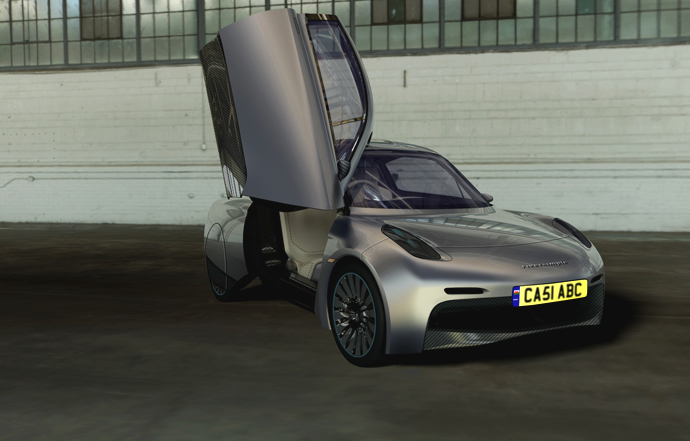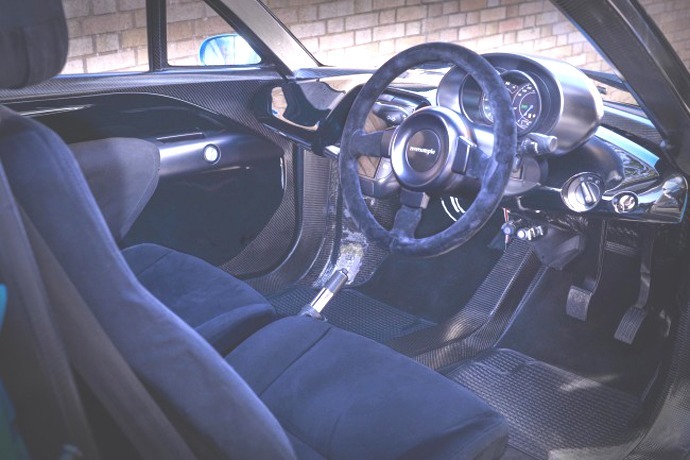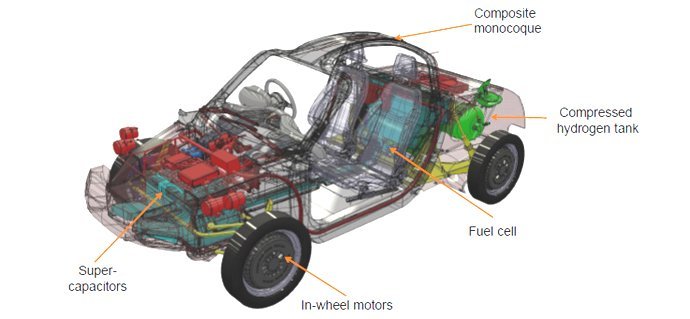
Why do some technologies endure beyond their sell-by-date while others yield to progress?
The internal combustion engine has done an admirable job at resisting obsolescence – even in the face of climate breakdown, an air pollution crisis and widespread cheating of emissions testing. Part of the reason is that car makers seem reluctant to start with a blank sheet of paper. If they did, they might find bicycles provided the most rational form of personal transport in urban areas, but even attempts at electric cars by the large manufacturers have been half-hearted – limited to retrofitting existing internal combustion engine models with batteries and electric motors.
There are signs the death knell is tolling for the internal combustion with the announcement by various countries including France that petrol and diesel vehicles are to banned by 2040.
Car makers have long been aware that time is running out for fossil fuels, but perhaps it took the VW emissions scandal for the world to see their true colours. In fact, with an estimated 40,000 premature deaths caused every year by polluted air in Britain alone, it is shocking that we have put up with dirty exhaust gases for so long.

The decision by France to ban petrol and diesel cars is part of its plan to be carbon neutral by 2050 – a pledge that includes no longer using coal to produce electricity by 2022.
New technology can establish itself extremely quickly – think of mobile phones. The good news for French drivers – and the rest of us when our own governments eventually play catch up, is that forward thinking car makers have already made plans for this sea change. As well as established companies like Renault and its range of electric cars, tech companies like Apple and Google are developing zero emission vehicles. Here in Britain, entrepreneurs are busy developing disruptive technology to step in once petrol and diesel vehicles are banned.
The Riversimple Rasa is a hydrogen car that aims to radically change the way we think of personal transport; an affordable, hassle free, fun-to-drive eco car. Under the French plan, those without the means to buy a clean vehicle will receive a grant, but the Rasa is never owned outright. Instead, it is leased like a mobile phone.
Tabula Rasa means ‘clean slate’ in Latin. It’s an apt name for the new Riversimple car, a vehicle that redefines personal transport in our age of increasing population and diminishing natural resources.
Every aspect of the Rasa has been created for simplicity, efficiency, lightness, strength, affordability, safety and sustainability.

In some respects, the Rasa can be likened to the Citroen 2CV, the iconic workhorse of post-war France. The two cars share a purpose of design, top speed of 60 mph and a weight of around 580 kg, but the Rasa is very much a car for today. Its chassis is a monocoque made from very stiff carbon fibre composites and yet weighs less than 40kg.
Weight distribution is even thanks to four electric motors, one in each wheel. The motors double up as brakes – recovering over 50% of kinetic energy when braking. Super-capacitors store this energy and provide most of the power for acceleration.

The production prototype should do the equivalent of 250 mpg with a range of 300 miles. Emissions are zero at tailpipe and around 40 gCO2/km if the hydrogen comes from natural gas.
Very few mobile phone users buy their handset upfront. Most of us spread the cost over the term of the contract. It’s a model that the makers of the Rasa aim to apply to motorists wanting to use a hydrogen car; they will retain ownership of the cars and sell mobility as a service.
Rather than buying the hydrogen car outright or having to set up a hire purchase agreement, a simple pricing structure enables customers to pay a single monthly fee that covers everything – the car, the maintenance, the insurance, the fuel. The rationale is that customers have all the pleasure but none of the hassle of ownership. From the manufacturer’s perspective, it pays to make a car that lasts as long, and runs as well, as possible.
More at riversimple.com
How does a hydrogen car work?
Hydrogen can be used as a fuel for electric cars thereby doing away with the need for a battery – the car does not have an engine in the conventional sense as it uses instead a fuel cell stack, a device that uses an electrochemical reaction between hydrogen and oxygen to produce electricity to power a motor. These so-called fuel cell vehicles can travel longer distances than electric vehicles that need to be re-charged directly from a mains supply.
At an early stage, the Riversimple venture was backed by Sebastian Piech, a great-grandson of Ferdinand Porsche, who in 1898 worked on the Lohner Electric Chaise – one of the world’s earliest electric cars. The Lohner car had a top speed of 31 mph and a maximum range of 30 miles.
ETA: Ethical breakdown cover
Established over 29 years ago, and with over 5,000 recovery trucks on call 24/7, the ETA has a proven track record of providing efficient, reliable breakdown cover. We handpick only the best local mechanics and garages around Britain to send out if you break down. We believe this way of working is efficient, environmentally friendly and helps support local communities and economies, too.
Environmentally friendly breakdown cover
Not all breakdown companies are the same. Established 29 years ago, and with over 5,000 recovery trucks on call 24/7, we have a proven track record of providing efficient, reliable breakdown cover. We have been rated ethical by the Good Shopping Guide.

We handpick only the best local mechanics and garages around Britain to send out if you break down. We believe this way of working is efficient, environmentally friendly and helps supports local communities and economies, too.
On top of this, we offset the carbon emissions of the recovery trucks that go out to assist you, reducing the impact your breakdown has on our environment. Every breakdown policy you buy helps fund the work of our charity, the ETA Trust, which campaigns for a safer, cleaner transport future.
Tony Williams
Fantastic picture of exhaust fumes, but you know that such a level of emissions is highly unusual – and maybe they’re not exhaust emissions but water vapour condensing, as it’s clearly a cold day with snow. But never mind: my car can take me 600 miles without refuelling and it can hold five people and quite a lot of luggage within a length of 14 feet. I don’t want an electric car that doesn’t go much over 100 miles before I need to spend half an hour recharging it. I don’t want a hydrogen car that holds only two people and has no boot because of a large hydrogen fuel tank. I don’t want an expensive brand new car when I can get something reliable that meets my needs for less than £4000. Those are reasons why people continue to buy vehicles with an internal combustion engine.
trevor brooker
Yes most people want the cheapest form of transport – so what is required is to make the internal combustion engine vehicles pay the true cost of ownership – ie fit complete catalytic convertors so that all harmful emissions are captured.
bob
Personally i think hydrogen fuel cells will win out in the end(i also remember reading about a system of pelletizing hydrogen so that it could be dispensed like petrol from a pump) Unfortunately the focus has shifted to evs. The infrastucture is just not there and will cost billions to install. EV enthusiasts all seem to believe we all live in semis with driveways and or garages when in fact 40% of the population lives in terraces or flats making on street charging problematic at best. Battery technology has not kept pace with the increasing hysteria over climate change either. And of course to produce batteries is fairly polluting in itself. If europe switches all vehicles to ev we are only exporting our carbon emissions to china who produce the batteries.
Rob
You guys do realised that Fuel Cell Vehicles DO need Batteries right? And that Electric cars can do go further then the River simple, with more than 2 people and with more than zero luggage. AND you apply the same non-ownership model to any car? Its hardly a revolution. Yes the infrastructure for Electric cars needs improving, but at the moment there are over 22000 public charging locations in the UK alone, not including home chargers or 3-pin plugs you can borrow in an absolute emergency. Hydrogen? 19. Not 19000, or 1900…. 19, i.e. one less than twenty. Also if it takes roughly 18kWh off electricity to crack, dry and compress Hydrogen (not including storage, pumping or recompression due to losses) that 3.5kg tank will is the effectively a 63kwh of electricity – personally I’d much rather save the hassle of hydrogen creation put that electricity into a Leaf, a Kona or something more comfortable and capable of motorway travel. Sorry
Penny Price
I feel I ought to challenge your opening statement a little : “but even attempts at electric cars by the large manufacturers have been half-hearted – limited to retrofitting existing internal combustion engine models with batteries and electric motors” that is not always the case. I bought a bmw i3 nearly two years ago, it has been designed as an electric car from scratch and has many different design features from a petrol / diesel car primarily to cut the car’s weight and improve its efficiency, for instance it has no side pillar and the front and rear doors open outwards, it is high up too, as the battery is underneath, which my elderly mother loves. It looks different and some people don’t like it, human nature seems to be suspicious of the new. However I will never own a petrol car again, electric is fantastic